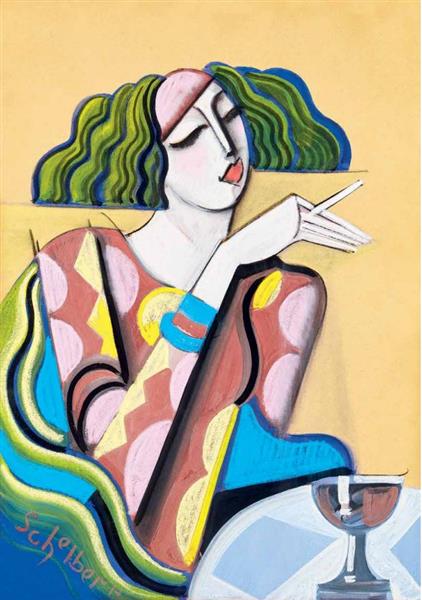Description
The work "1930 Bárhölgy" by Hugó Scheiber is an outstanding example of Hungarian modern art that arises in the first half of the twentieth century and is representative of the post -impressionist style and Fauvism that influenced many artists of his time. Scheiber, born in 1886, was formed at the Budapest Academy of Fine Arts and developed a style characterized by a fusion of vibrant colors and expressive shapes. The painting in question, carried out in 1930, captures the essence of its artistic search through the use of color and shape.
When observing "Bárhölgy", we find a composition that evokes an atmosphere of intimacy and connection with nature. He painting It presents a group of women in a landscape, where the female figure becomes the center of attention, not only as an aesthetic element but as a representation of everyday life and femininity. The figures, stylized and with simplified forms, seem to flow in a natural environment, which invites the viewer to reflect on the relationship between the human being and its surroundings.
The colors that Scheiber uses are intense and bold, highlighting the use of blue, green and a palette of warm tones that create a sensation of vitality and movement. This color use is not merely decorative; It reflects its Fauvista influence, where the color becomes an emotional vehicle that transcends the mere optical representation. The disposition of the figures, with their soft contours and fluid lines, reinforces this sense of movement, suggesting that women are not static in a landscape, but are alive and in interaction with their environment.
The characters in the painting, although specific in their form and silence, transmit a dynamic narrative. Women are represented in different positions and attitudes, which suggests a variety of human experiences, from contemplation to joy. This approach focused on the female figure can be seen as a reflection of the modernity of the time, where the multiplicities of roles and the search for identity began to have a more significant place in social discourse.
The work can also be interpreted in the context of the Hungarian artistic movement of the time, which was characterized by a search for new forms of expression. Scheiber, like other contemporaries, had the mission of redefining Hungarian painting and taking it to new directions. "Bárhölgy" exemplifies this impulse, align art with lived experience and cultural identity at a time of social change.
In summary, "1930 Bárhölgy" is more than a simple representation of female figures in a landscape; It is a deep exploration of the relationships between the human being and nature, a study of color and its ability to convey emotion, and a testimony of the advance of the avant -garde in Hungarian art. Scheiber, through this work, not only pays tribute to the female figure, but also lasts in time with his visionary interpretation of the world that surrounded him, inviting everyone to approach the essence of what he means to be human in his Relationship with Earth.
KUADROS ©, a famous paint on your wall.
Hand-made oil painting reproductions, with the quality of professional artists and the distinctive seal of KUADROS ©.
Art reproduction service with satisfaction guarantee. If you are not completely satisfied with the replica of your painting, we refund your money 100%.

